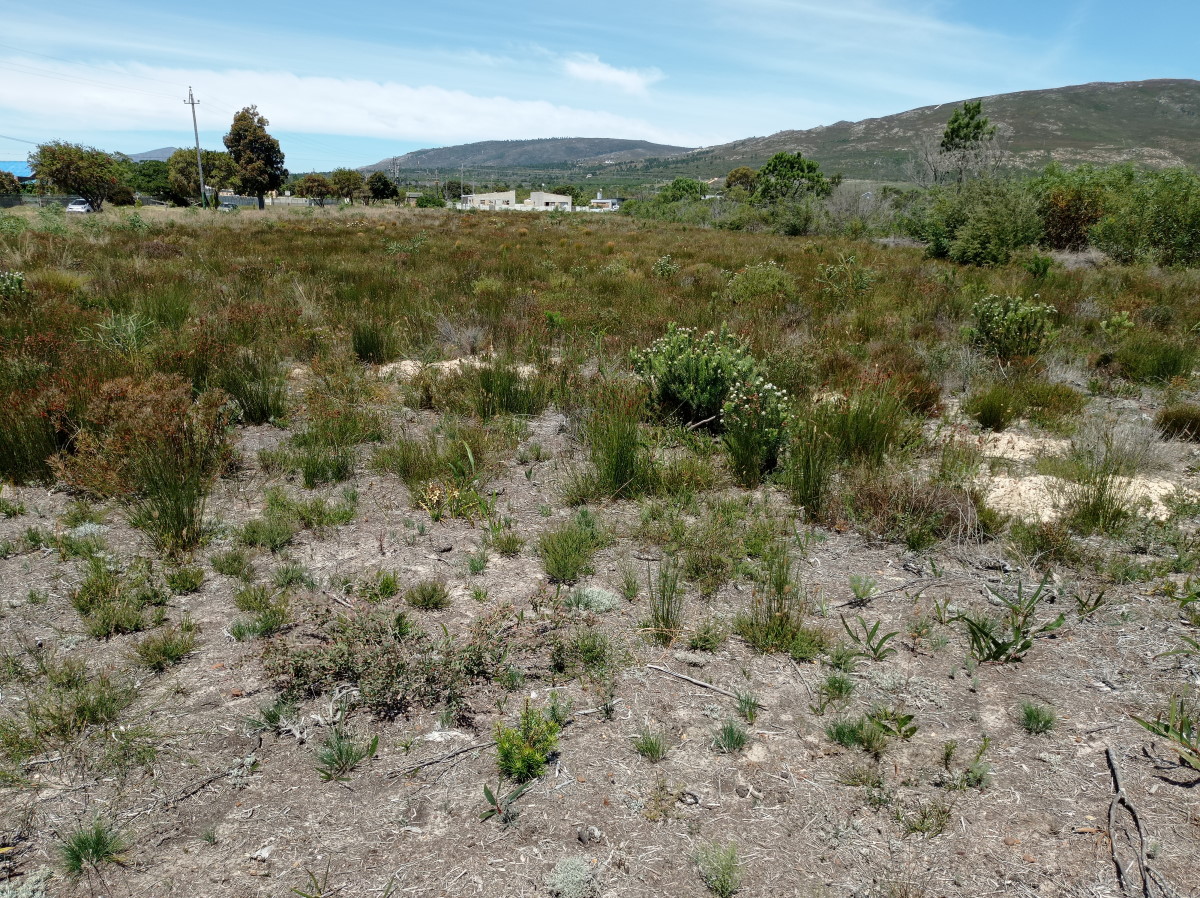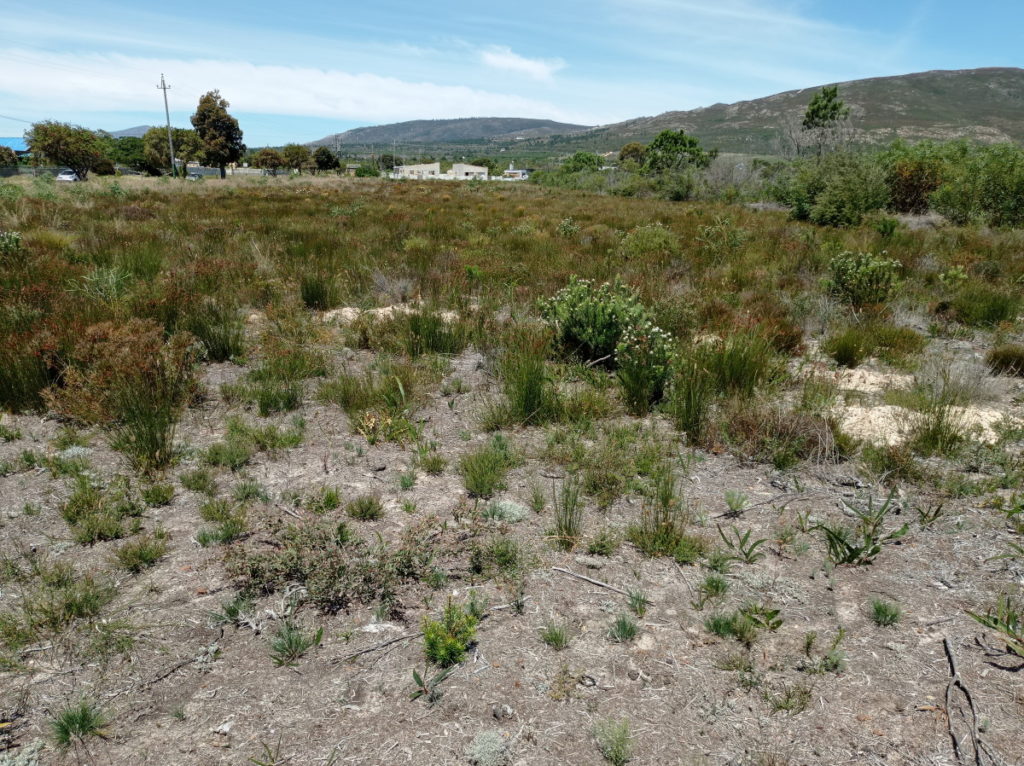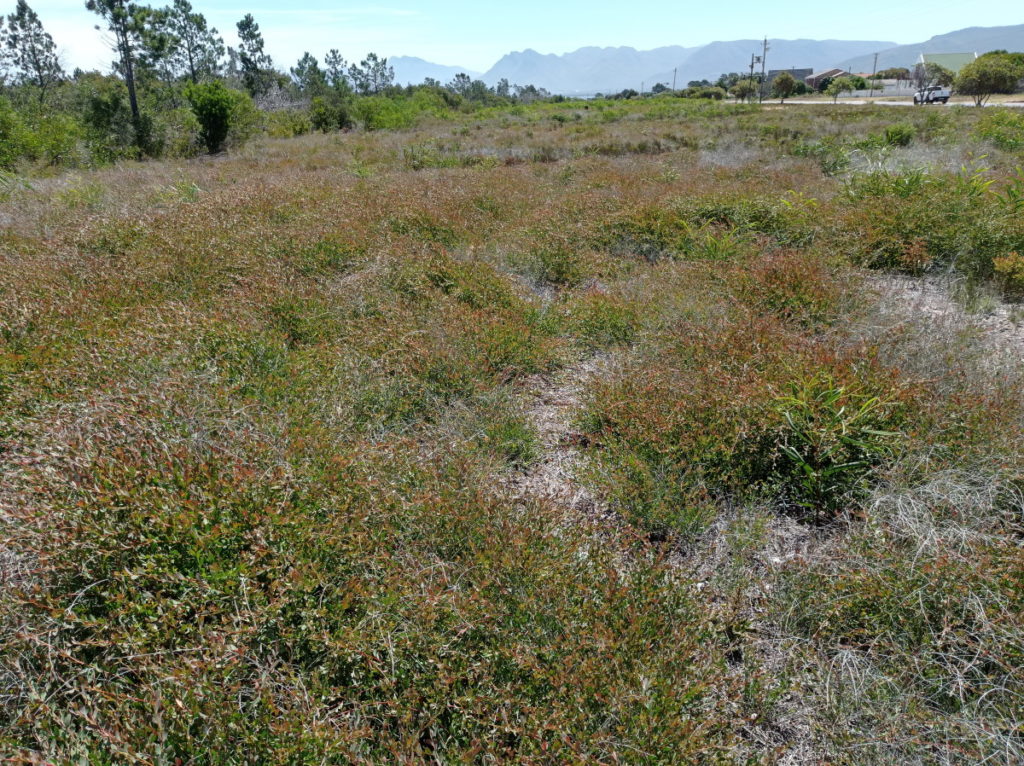
Is this a step in the right direction? The data on the recent China Marais clearing of aliens indicates that it is not so.
A comparison of the area cleared of invasives by Botfriends and the area cleared by the OSM in China Marais speaks for itself. Botfriends solved the problem of the fire hazard and invasive species positively. OSM temporarily solved the problem of the fire hazard, but made the problem of the fire hazard and invasive species worse, even in the short term. The invasive species are already re-growing from big root systems only 3 weeks after clearing. In a year’s time there will be twice as many stems of Port Jacksons and more of a carpet of Myrtle.
Some numbers and costs show the comparison below:
The first part of China Marais cleared by Botfriends was 8 260 m2. The second section was cleared by the OSM, was 8 300 m2. There was similar invasion of aliens in both areas. Data was measured on site.
| Year | Botfriends | OSM |
| First year | 13 worker days | 22-24 worker days |
| Second year | 1 worker days | 24+ worker days estimate |
| Total over two years | 14 worker days | 46 worker days (at least) |
| Third year (projected) | 1 worker days | 24+ worker days |
The Botfriends labourers probably worked much harder and got paid less than the OSM workers. But they were trained to do the job properly and had informed supervision. Similar numbers have been generated elsewhere in Fisherhaven.
Botfriends has taken a step in the right direction. Botfriends achieved an environment dominated by short Fynbos with no invasive species, and having a very low fire hazard. The cleared area is easy to maintain and costs very little. The OSM has compounded the problem. The fire hazard has increased and invasive species (become more dominant), which gets worse every year and therefore costs much more. This seems to be a step in the wrong direction, although debatably better than mowing.
There is a delicate balance between getting the job done right and getting it all wrong. The understanding of species competition, differences in seed germination, careful use of poisons, growth habits of different species, nutrient and water uptake ability, amount of sunlight available and the integration of all these factors with an emphasis on timing makes the difference between working with nature ( a step in the right direction) and working against nature.
These pictures are taken nearly two years later, showing the vast difference in the two areas. The difference is even more than was expected.


Alien species:
and will therefore spread and dominate the vegetation in a short time period with very much higher fire risk, where management practises promote alien species.
Indigenous species:
and will spread and recover well dominating the vegetation, with lower fire risks, if alien species are correctly removed and timely follow up removal of aliens is done.
The costs of poor management techniques of alien species removal increase on a logarithmic or exponential time scale whereas the costs of good management techniques of alien species removal decrease exponentially.
The time scale for control of alien species is less than 10 years. The alien seeds in the soil do not last much longer, as apposed to indigenous species which have adapted in various ways to last much longer as viable seeds. This factor is influenced by many variables including competition from existing established plants. It has been established in Fisherhaven that viable competition can be established by indigenous species in as little as 3 years. This presupposes that alien seeds are not been introduced from surrounding areas. This is good news for timeous follow-up clearing before seed production occurs from aliens and causes costs of control of aliens to reduce significantly.
Michael Austin of Greenheart Projects
A pamphlet on invasive species in Fisherhaven has been produced. Other data obtained from the Botfriends challenge is shown in the activity of Botfriends 2020.

Recent Comments